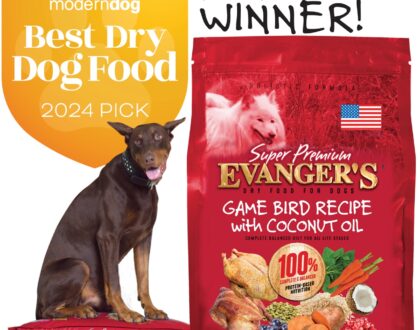Tips for Transitioning Your Dog to a New Diet

by Ian Germann
Our canine companions are an important part of our lives, and it’s our responsibility as pet parents to ensure they’re happy and healthy. One of the main ways to achieve this is by feeding them a well-balanced diet that fully meets their nutritional needs. With that in mind, there may be instances where we need to change our dog’s diet, either due to a medical condition, preference for a different food type or when they enter a new life stage. Here are a few tips to help you transition your dog to a new diet successfully.
Introduce New Food Gradually
Abrupt changes to a dog’s diet can cause digestive upset, which may lead to vomiting, diarrhea, and loss of appetite. Therefore, it’s essential to introduce the new food gradually over a period of seven to ten days. Begin by mixing a small amount of the new food with the current food, gradually increasing the amount of new food while reducing the amount of the old food until the new food makes up 100% of their diet.
Monitor Your Dog’s Reaction
Observe your dog’s reaction to the new diet closely. Some dogs may take to the new food right away, while others may need more time to adjust. Look for signs of digestive upset, such as vomiting, diarrhea and excessive gas. If you notice any adverse reactions, consider slowing down the transition process and returning to the old diet for a while before trying again.
Consider the Nutritional Needs of Your Dog
Different dogs have different nutritional needs, depending on a variety of factors such as their age, size, breed and activity level. Consult with your veterinarian to determine the most appropriate diet for your dog. If you’re switching to a different type of food, such as from dry kibble to wet food, make sure that the new food meets your dog’s nutritional needs.
Evanger’s Pet Food has a plethora of different food options for dogs, with a variety of meaty meals with green, locally sourced ingredients to keep your pup happy and healthy. Evanger’s Dry Dog Food is a great option for dogs of all ages, formulated to meet the nutritional levels established by the AAFCO nutrient profiles for all dog life stages.
Be Consistent
Once you have successfully transitioned your dog to the new diet, stick to it. Consistency is crucial in maintaining your dog’s health and preventing digestive issues. Avoid giving your dog table scraps or other foods that are not part of their regular diet, as this may upset their digestive system.
Provide Plenty of Water
Regardless of the type of diet, make sure your dog has access to clean and fresh water at all times. Proper hydration is vital for your dog’s health and can help prevent urinary tract infections, kidney disease, and other health issues.
Other than access to fresh water, feeding wet food is a great way to easily increase your dog’s hydration. At Evanger’s we understand this, so we really put the “wet” in wet food to make sure your dog is getting properly hydrated. One of our fan favorite flavors for example, our Heritage Classic Beef & Bacon, comes with up to a 78% moisture level! For those looking for dog food with even more moisture, our Chunky Chicken Casserole goes up to 82% moisture with it’s delectable chicken broth.
In conclusion, transitioning your dog to a new diet requires patience, consistency, and careful observation. By following these tips, you can help ensure that your dog adjusts to the new diet smoothly and maintains optimal health and well-being. Remember to consult with your veterinarian if you have any concerns or questions about your dog’s diet.
Recommended Posts

What to Feed a Dog with Hip Dysplasia
August 21, 2023

Nutritional Tips for Boxers
August 15, 2023



